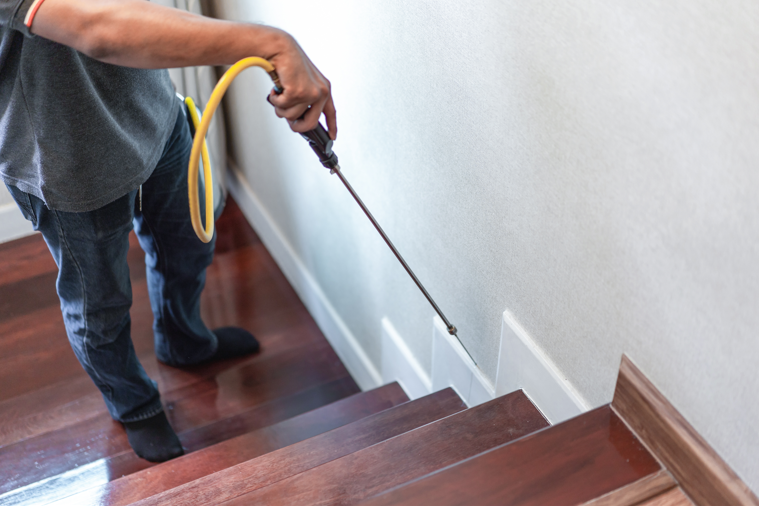Tiny footprints on your kitchen counter or rustling sounds in your walls at night could be the start of a full-blown pest infestation. Pests like cockroaches, ants, and rodents are a common household nuisance. They can disrupt your peace of mind and make your home feel like a battleground.
Besides the annoyance factor, pests pose a real threat to your health. They can carry harmful bacteria and diseases, contaminate your food, and trigger allergies. Some pests, like termites and carpenter ants, can even cause structural damage to your home. The problem goes deeper than just surface-level irritation.
Don’t let pests take over your sanctuary. The following proactive prevention strategies and effective solutions to eliminate existing infestations will help you reclaim your home and enjoy a pest-free environment once again.
I. Dos
Taking proactive steps is the most effective way to keep pests out of your home. With the right prevention strategies, you can create a less hospitable environment for unwanted critters.
1. Prevent Infestation
Pests can squeeze through surprisingly small openings. Inspect your home’s exterior for cracks, gaps, and holes. Seal them with caulk, steel wool, or weatherstripping. Don’t forget to check around pipes, vents, and windows.
A clean home is less inviting to pests. Wipe up spills promptly, sweep and mop regularly, and store food in airtight containers. This is especially important for bed bug management, as they’re attracted to food debris and clutter. Take out the trash frequently and ensure your garbage cans have tight-fitting lids.
Many pests thrive in damp environments. Fix leaky faucets and pipes, use a dehumidifier in humid areas, and ensure proper ventilation in bathrooms and kitchens.
2. Use Natural Deterrents
Many herbs and essential oils have pest-repellent properties. Peppermint, lavender, and citrus oils are popular choices. You can mix them with water in a spray bottle and apply them to potential entry points or areas where pests are common.
Diatomaceous Earth
This powdery substance is made from fossilized algae. It’s safe for humans and pets but deadly to crawling insects. Sprinkle it along baseboards, under sinks, or in cracks and crevices.
Beneficial Insects
Ladybugs and praying mantises are natural predators of many garden pests. While they may not venture indoors, having them around your yard can help reduce pest populations and lower the chances of them migrating into your home.
3. Use Targeted Treatments
Sometimes, despite your best efforts, pests may still find their way into your home. In these cases, you can use targeted treatments to eliminate them.
Bait Stations
These small containers hold poison that attracts pests. The pests consume the bait and carry it back to their nests, effectively eliminating the entire colony. Place bait stations near areas where you’ve seen pest activity, like along baseboards or under sinks.
Traps
Sticky traps are useful for monitoring pest activity and catching small insects. Snap traps are effective for mice and rats. Place traps in areas where pests are likely to travel, such as along walls or near food sources.
Insecticides
Use insecticides as a last resort and always choose products specifically formulated for indoor use. Follow label instructions carefully and take precautions to protect children and pets.
II. Don’ts
While getting rid of pests is essential, it’s equally important to do so responsibly. Avoid common mistakes that could worsen the problem or endanger your loved ones.
1. Avoid Over-The-Counter Overkill
Using pesticides indiscriminately can harm more than just pests. These chemicals can be toxic to pets, children, and beneficial insects. They may also contaminate indoor air and surfaces.
Outdoor vs. Indoor Pesticides
Never use outdoor pesticides inside your home. They’re often more potent and pose greater risks in enclosed spaces.
Ventilation
If you must use chemicals, open windows and doors to ensure adequate ventilation. Follow the product’s safety instructions to the letter.
2. Don’t Ignore The Signs
Early detection is crucial in pest control. The sooner you identify an infestation, the easier it’ll be to manage. Ignoring the problem will only allow it to worsen.
Be Observant
Keep an eye out for droppings, gnaw marks, shed skin, or unusual smells. These are common signs of pest activity. You may also notice live or dead insects, damaged food packages, or nests in hidden areas.
Identify The Culprit
Different pests require different treatment methods. If you’re unsure what type of pest you’re dealing with, try to capture a specimen or take a clear photo. You can then consult online resources or seek advice from a pest control professional.
III. DIY Isn’t Always the Answer
While many pest problems are manageable with DIY methods, some infestations require professional intervention. Don’t hesitate to seek help if you’re feeling overwhelmed.
- Know your limits: If your efforts aren’t yielding results or the infestation seems to be spreading rapidly, it’s time to call in the experts.
- When to call a pro: Professionals have the knowledge, experience, and specialized tools to tackle severe infestations. They can also identify the root cause of the problem and recommend long-term prevention strategies.
- Choosing a reputable company: Do your research and choose a licensed and insured pest control company with a good reputation. Ask for references and get written estimates from multiple companies before making a decision.
Conclusion
Maintaining a pest-free home requires diligence and a multi-pronged approach. The tips shared herein will help you effectively control pest populations.
To stay one step ahead, make regular pest inspections part of your routine. Check for signs of activity, especially before warm weather when pests become more active. Consider incorporating pest-deterrent plants like lavender, mint, or rosemary into your landscaping. Their scents can create a natural barrier around your home.
And if your neighborhood is experiencing a widespread pest problem, consider joining forces with your neighbors. A coordinated effort can be more effective in controlling pest populations and preventing future infestations.

